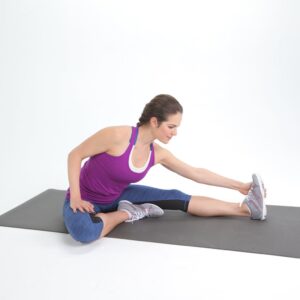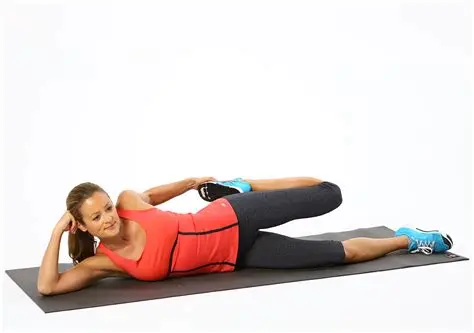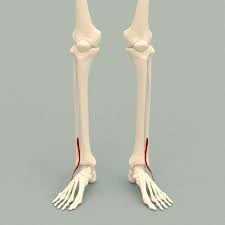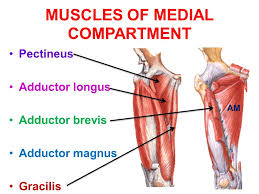Wall Sit Exercise
Table of Contents
Introduction
The wall sit exercise is helpful for the front thigh muscles. this exercise is basically helpful for making the quadriceps, gluteal and calf muscles more powerful. The wall sits exercise is not a complex exercise.
Muscle performance
Wall sits are a type of exercise that involves holding a seated position against a wall for an extended period. This exercise primarily targets the lower body muscles, including the quadriceps, hamstrings, and glutes. The following is a detailed explanation of how these muscles perform during wall sits:
- Quadriceps: The quadriceps are the primary muscle group targeted during wall sits. They are placed on the front of the thigh and made up of four individual muscles: rectus femoris, vastus lateralis, vastus medialis, and vastus intermedius. During a wall sit, the quadriceps work to maintain the seated position by contracting isometrically (without movement) to keep the knees bent at a 90-degree angle.
- Hamstrings: The hamstrings are located on the back of the thigh and work in opposition to the quadriceps during wall sits. While the quadriceps contract to maintain the seated position, the hamstrings work eccentrically (lengthening under tension) to resist gravity and prevent the body from sliding down the wall.
- Gluteal Muscle: The glutes, or buttocks muscles, also play a role in wall sits by providing stability and support to the hips and lower back. They work isometrically to maintain a neutral pelvic position and prevent excessive forward or backward tilting of the pelvis.
Overall, wall sits are an effective way to improve lower body strength and endurance, particularly in the quadriceps muscles. By holding a seated position against a wall for an extended period of time, these muscles are challenged to work isometrically, which can lead to increased muscle tone and improved overall performance.
Types of wall sit
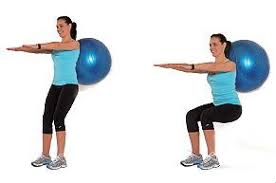
Wall sits are a popular lower body exercise that involves holding a seated position against a wall. Here are four types of wall sits:
- Basic Wall Sit: Stand with your back against a wall and slide down until your knees are bent at a 90-degree angle. maintain this position for as long as you can, do it for 30-60 seconds.
- Single Leg Wall Sit: Begin in the basic wall sit position, then lift one foot off the ground and hold for 10-15 seconds before switching to the other leg.
- Ball Wall Sit: Place an exercise ball between your back and the wall, then slide down into a seated position. maintain this position for 30-60 seconds.
- Weighted Wall Sit: Hold a weight (such as a dumbbell or kettlebell) in front of your chest while performing a basic wall sit. This adds resistance and makes the exercise more challenging. Aim for 10-15 repetitions.
How to perform?
These are the steps to perform wall sits :
- Find a clear wall space: Choose a clear wall space that is free from any obstructions or obstacles. Make sure the wall is sturdy and can support your weight.
- Stand with your back against the wall: Stand with your back against the wall, with your feet shoulder-width apart and about 2 feet away from the wall.
- Lower your body: Slowly lower your body down by bending your knees and sliding your back down the wall until your thighs are parallel to the ground. Your knees must be bent at a right angle to the ground.
- Maintain the position: Hold this position for as long as you can, aiming for at least 30 seconds to 1 minute. Make sure to keep your back flat against the wall and your knees directly above your ankles.
- Stand up: Slowly stand up by pushing through your heels and straightening your legs.
- Repeat: Repeat the exercise for several sets, gradually increasing the duration of each set as you build strength and endurance.
Tips for performing wall sits:
- Keep your feet flat on the ground and your weight evenly distributed between both feet.
- Make sure your knees are directly above your ankles and not extending past them.
- Keep your back flat against the wall and avoid arching or rounding your spine.
- Breathe deeply and evenly during the whole exercise.
- Gradually increase the duration of each set as you build strength and endurance.
Benefits
Wall sits are a popular exercise that involves sitting against a wall with your knees bent at a 90-degree angle. This exercise is often used in strength training and fitness programs to improve lower body strength, endurance, and overall fitness. Here are some benefits of wall sits exercise in detail:
- Builds lower body strength: Wall sits target the muscles in the lower body, including the quadriceps, hamstrings, glutes, and calves. By holding this position for an extended period, you can build strength in these muscles, which can help improve your overall athletic performance.
- Improves endurance: Wall sits require you to hold a static position for an extended period, which can help improve your muscular endurance. This can be particularly beneficial for athletes who need to maintain their strength and stamina throughout a game or competition.
- Helps with injury prevention: Stronger muscles in the lower body can help prevent injuries such as strains, sprains, and tears. By regularly performing wall sits you can strengthen your lower body muscles and reduce your risk of injury.
- Enhances flexibility: Wall sits can also help improve your flexibility by stretching the muscles in your lower body. This can be particularly beneficial for people who spend a lot of time sitting or have tight muscles from other activities.
- Easy to do: Wall sits are a simple exercise that can be done anywhere, without any equipment. This makes them an ideal exercise for people who don’t have access to a gym or prefer to work out at home.
In conclusion, wall sits are an effective exercise that can provide numerous benefits for your lower body strength, endurance, flexibility, and injury prevention. By incorporating this exercise into your fitness routine, you can improve your overall fitness and achieve your fitness goals.
Precautions
While wall sits are generally a safe exercise, there are some precautions you should take to avoid injury:
- Start slow: If you’re new to wall sits, start with shorter holds and gradually increase the time as your muscles get stronger.
- Use proper form: Make sure your knees are directly over your ankles and your back is flat against the wall. do not do the leaning forward or arch your back.
- Don’t overdo it: Avoid doing too many walls sits in one session, as this can lead to muscle fatigue and strain.
- Listen to your body: If you feel any pain or discomfort during the exercise, stop immediately and rest.
- Consult a professional: If you have any pre-existing injuries or medical conditions, it’s best to consult with a fitness professional before starting wall sits or any other exercise program.
By following these precautions, you can safely incorporate wall sits into your fitness routine and reap the benefits of this effective exercise.
FAQ
Wall sits primarily work the quadriceps (front of the thigh), but also engage the glutes (butt) and hamstrings (back of the thigh).
Aim to hold a wall sit for 30-60 seconds, or as long as you can without compromising form. Rest for 30-60 seconds between sets.
Yes, wall sits are a great exercise for building leg strength and endurance.
Yes, beginners can start with a higher wall sit position (less than 90-degree knee bend) and gradually work their way down to a deeper squat.
It’s recommended to do wall sits 2-3 times per week, with at least one day of rest in between sessions. As you get stronger, you can increase the frequency or duration of your wall sits.


